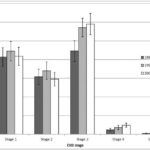Air, though invisible, possesses weight and exerts pressure on everything it surrounds. This pressure, defined as force per unit area, is influenced by factors like air density, which in turn is affected by temperature, and the mass of the air itself. Barometric pressure, specifically, is how we measure the atmospheric pressure, and it’s significantly impacted by altitude. At sea level, the column of air pressing down is taller and heavier compared to that at higher altitudes like Mount Denali, resulting in higher barometric pressure at lower elevations.
A healthy car engine is designed to create a low-pressure zone, often referred to as a vacuum, within its intake system. Interestingly, the engine’s capability to generate this low pressure remains consistent regardless of altitude. An engine will essentially pull the same level of vacuum whether it’s at sea level or high in the mountains. However, the difference between this engine-created low pressure and the surrounding barometric pressure changes with altitude. This is because barometric pressure itself is variable with height above sea level.
It’s commonly stated that a well-functioning engine at sea level can achieve a vacuum of about 18 to 21 inches of mercury (inHg). Given that barometric pressure at sea level is approximately 30 inHg, the absolute pressure within the intake manifold would be around 9-12 inHg (30 inHg – 18-21 inHg). Now, consider an environment at 7000 feet above sea level where barometric pressure drops to around 24 inHg. The same engine, operating with the same efficiency, will still lower the pressure in the intake manifold by that consistent 18-21 inHg relative to its local barometric pressure. This means the intake manifold pressure will again be around 9-12 inHg absolute, but the vacuum gauge reading (the difference from local barometric pressure) will now only show approximately 12-15 inHg (24 inHg – 9-12 inHg) because the starting point, the atmospheric pressure, is lower.
When interpreting pressure readings in automotive diagnostics, especially vacuum readings, it’s crucial to understand these three key variables:
- Absolute Barometric Pressure: The actual atmospheric pressure at your current location, which varies with altitude and weather conditions.
- Absolute Intake Manifold Pressure: The actual pressure within the engine’s intake manifold when running. This is often measured by sensors like the MAP (Manifold Absolute Pressure) sensor.
- Vacuum Gauge Reading: This displays the difference between the barometric pressure and the intake manifold pressure. It’s this difference that traditional vacuum gauges measure and what is commonly discussed in terms of “engine vacuum.”
The terminology around pressures below atmospheric level can indeed be confusing. Terms like “vacuum” are often used loosely. True vacuum implies a complete absence of pressure, but in automotive contexts, we are always dealing with low pressure relative to atmospheric pressure, not a complete void. The use of unconventional units like inches of mercury or millimeters of water further complicates understanding.
To simplify, think of it purely in terms of pressure and pressure differences. There’s a baseline of zero pressure, and all other pressures are above it. “Vacuum” readings are simply indicating how much lower the pressure is in a specific location (like the intake manifold) compared to the ambient atmospheric pressure. Negative pressure, in the absolute sense, doesn’t exist in our everyday automotive world. Understanding barometric pressure readings and their influence on engine vacuum is fundamental for accurate car diagnosis, especially when working on vehicles at varying altitudes. Recognizing these nuances allows for more precise interpretation of diagnostic data and ultimately, more effective repairs.
